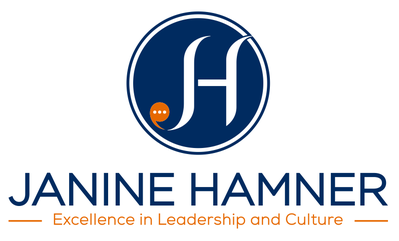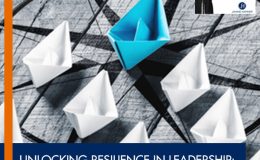
The world is evolving at an unprecedented pace, with technologies like AI rapidly transforming industries. How can we keep up? In this episode, we sit down with digital marketing expert Jennifer Bagley to explore the challenges and opportunities of navigating these rapid changes. Discover practical strategies to adapt, learn, and thrive in an ever-evolving landscape. From building resilience to embracing innovation, Jennifer shares invaluable insights to help you stay ahead of the curve.
GUEST: Jennifer Bagley | LinkedIn | Visit their Website: CI Web Group, Inc.
HOST: Janine Hamner Holman | [email protected] | LinkedIn, Facebook, and Twitter | Subscribe to my Newsletter! | Book me to Speak!
—
Listen to the podcast here
Keeping Pace: Thriving In A World Of Rapid Change With Jennifer Bagley
As the CEO and Founder of CI Web Group Inc., a leading digital marketing company, Jennifer Bagley has transformed the home services industry with her innovative twelve-step roadmap to achieve accelerated results. She is a highly sought-after speaker who has inspired countless entrepreneurs, including me, with her expertise and strategies for business growth. Welcome to the show, Jennifer.
Thank you, Ms. Janine. I appreciate you having me.
The Cost Of Ignoring Rapid Change
I’m so excited. Let’s get into it. What is one thing that you have realized, either in your business or working with clients that they have been failing to pay attention to? What’s the cost of that inattention? What’s the problem that inattention is causing?
There are lots of things. However, the one thing that comes to my mind during this period is self-reflection on how we, as business owners, need to alter our mindset, way of thinking, pattern of decision-making, and openness to change due to the rate of technological advancements. With AI impacting and advancing every possible element of our business, we have developed a whole bunch of bad habits as business owners.
Your business should never stop evolving. The moment you think you've figured it out, it's time to start rethinking everything. Share on XIt could be something as simple as building a website and getting stuck on design and content when, in reality, we’re minutes away from a website being able to alter the content, text, images, and CTAs on its own based on how consumers interact with it. We just have these habits of going through these really slow and methodical processes as business owners and taking our time to make critical decisions. The reality is with technology, we have to think, analyze, adopt, test, try, change, evolve, and change again way faster than we have in the past.
There are a couple of different key distinctions that I want to pull out in what you’re talking about. On the one hand, if you’re out there listening and you feel like what Jennifer’s talking about, the pace of change and the need for us to make decisions more quickly than we ever have before, you are feeling something that is real, that is true. We are all feeling that with any business owner, any CEO, a startup, a solopreneur, or someone running a Fortune 50 company. The other side of that is, how do we get better at making decisions quicker? One of the key tools you are pointing to is using technology, using AI to help us.
I was thinking about doing some rebranding of my business. I was playing around with a couple of close advisors, and we were talking about what it might be called and what the tagline would be. We came up with maybe a dozen different things. I went to ChatGPT just to see. I had it look at my website and come up with the name of a consulting organization if somebody were doing all those things, and it even designed a logo. Within fifteen seconds, it came up with a dozen different ideas. Some of them were the same ideas that we had come up with, some were different, and some were substantively different and a logo design. There was some Latin in it.
Its concept.
Its concept, not literally done by a graphic designer, but by a computer. There was brilliance there. We had spent 2 hours, my 2 close advisors and I, coming up with all of this stuff. I went to ChatGPT and said, “Let’s see what you can do.” What it did was as good or better than what we had come up with in two hours. Take that idea and write it bigger than I personally have the opportunity to see yet.
Using AI To Enhance Business Efficiency
Pretty much everybody, I believe, has got into ChatGPT and is using it for ideas like that, text, writing an email, or writing a response to a review, stuff like that. What you can do with large language model platforms outside of ChatGPT or on ChatGPT’s backbone is everything. Do you want to reformat an entire spreadsheet? AI can do that. Do you want to write a chunk of code? AI can do that. Do you want to evaluate metadata or a series of websites to determine top-performing elements on those sites that are beating yours? AI can do that. Do you want to analyze big data and get analytical information? AI can do that. Do you want to create a wireframe that’ll outperform your competitors? AI can do that.
AI is more than a tool; it's a game-changer. It can give you back hundreds of hours, making your business faster, sharper, and more intelligent. Share on XIt’s financial modeling, forecasting, budgeting, and prediction. There aren’t very many pieces of the business that, not just ChatGPT but the software and technologies that are leveraging that backbone, can’t give you back hundreds of hours per human being in your organization. We were in a meeting right before this with a client, and they’re getting around 400 calls on a daily basis.
They’re outsourcing to a CSR team to handle some of the calls. Some of the calls they’re handling in-house, and we’re listening to the calls. “You’re only booking 33% of those calls. What’s going on? This isn’t good.” I actually dove in and started listening to the calls. I’m not saying don’t hire humans, but I am saying that somebody’s PMSing, somebody’s having a bad day. Somebody’s got attitude. Somebody doesn’t like or can’t understand an accent, whatever all those things are.
I showed them the difference between utilizing our AI booking platform. They were like, “No, that’s impossible. No one’s going to talk to an AI.” I’m like, “Let’s go listen to some of those calls. She sounds less like a robot than the callers. She’s friendly. She doesn’t sleep. She doesn’t take vacations. Little Allie over here is kind. She hears what they’re saying, regardless of accent or tone or anything else. She listens, she pauses, all of these, and she’s booking at a higher rate than the humans you’re employing.” In the worst-case scenario, cut out the third party who’s really horrible and let Allie take those calls for you.
There are so many different pieces behind this. I think that the challenge is, a lot of times, we’re making these gut-feeling calls. Stop watching iRobot. AI might take over the world, and robots might drop out of the sky and shoot us all up. Who knows? That might be coming in the future, but right now, they’re not. They’re giving us our time, life and hours back. They’re making us faster, sharper, more intelligent. I think that’s the challenge. Right out of the gate, you have the worst scenario of defending something you know nothing about with something that hasn’t happened, may never happen, and hasn’t happened yet, which is insane.
There is, “I’m interested, but I sit on the fence too long,” or it’s my bad habit of taking the long way to get things done. I always start there and then try to validate it later. Those are all natural progressions. We’ve got to get from here to here faster. We’ve got to create a little bit of friction to be able to compete because there’s a new group of humans that are becoming CEOs, entrepreneurs, and joining the entrepreneurial and business management force that grew up with this. We’re going to have a whole new generation that doesn’t know anything different than this. That’s right. I don’t want to work for them. It’s got to be biggie. I feel like we have to figure out how to get there at a significantly greater pace than we are right now.

AI In Business: Creating friction is essential to stay competitive in a world that’s moving faster than ever before.
Do you think our collective resistance around this is rooted in our good friend, “We’ve always done it this other way”? Do you think it’s because I’m not an early adopter of anything, so I’m going to let it get the kinks out? Do you think you fundamentally don’t really understand it, and because I don’t understand it, I feel overwhelmed and there are so many different options? D) All of the above, E) All of the above, and some other things. What is your analysis of where our paralysis around this is coming from?
Yes. It’s all over the board. It’s all over the board. Some of this is going to be natural selection. That is what it is. We pick that path. We know what that looks like in businesses. We’ve seen it happen in industries. We know what that looks like, and that’s fine. That creates more opportunity for those willing to at least admit that it’s hard to say, “I don’t know. I don’t even know that I don’t know, so I don’t ask because I didn’t know. I didn’t know.” That’s a bad place to be.
I don’t even know what I don’t know, which is most of the universe. I know I don’t know how to fly a plane. I’m very clear that I don’t know how to fly a plane.
Consciously aware.
There are all the things, and I know that I don’t know a lot about AI and evolving technology. I’m not tech-oriented. I’m human-oriented. That’s how I work with my clients. If we ignore the tech, what you’re saying is we do it at our own risk. We do it at the risk of not being able to keep up, not being able to make decisions quickly enough, not adopting what others are adopting. At the least, being left in the dust and, at the most, ensuring our own extinction.
The cost of inaction is higher than the risk of change. Don't let fear hold your business back from what's possible. Share on XI think it’s a pressure cooker. It makes me nervous. I’m not comfortable with it either. My kids call me old. I still use slang that’s totally outdated. I have a lot of 20 and 30-year-olds that work in our company. What I ask them to do is create friction. I want to know when I’m doing something that is dumb or slow, call it. Make the call. I want to know.
“Jen, why are you doing that? You spent two hours on that PowerPoint presentation. You can load beautiful AI. You can give it a single prompt. Your PPT is done, and you’re ready to go in two and a half minutes.” What is it? I want to know that. Tell me those things, and then show and tell. We created a stakeholder group in the team that analyzes every element and piece of our entire business to identify what AI or automation tools exist that can give us back time and allow us to focus on the things that only humans can focus on. Why do something that software can do better, more consistently, 24 hours a day?
Finding The Right Tools For Your Business
How do you identify whether they’re within or outside your company? If you’re a solopreneur or a small business, they may well be outside your company. How do you find those people who can help you determine what are the things that I’m doing that I just should not be doing? I have in my head, as we’re sitting here, one of the things that I need to do is design two new pages for my website.
As I’m hearing you talk, I am thinking I should not be doing that. I should be having AI do that. I should review it. I should make sure it actually sounds like me. There are still things that I would need to spend a little bit of time on, but I don’t need to do the wireframing. I can have technology do that. I’m not 100% sure. I think I had that idea in the back of my head, but I definitely didn’t have it in the front of my head before we started having this conversation. How do we even figure out what are the things that we don’t know that we don’t know? How do we find those people who can help us?
There’s a lot to unpack there. There’s finding the people. I have an HR team that knows their job is to hunt for unicorns. I hate that that’s literally their job description. Find the unicorns, the ones who bother you when they get around you because they’re like, “Why do you do that? How can you do this? Let me show you my screen.” Those unicorns. When you get them, because they come around you, they ask you a series of questions, and they’ll cut you off. They’re going to show you something that they did 10 times better, 10 times faster, or how to do it. That’s just their personality style. They can’t stand to be in a space where something is repetitive, redundant, or slow.
There’s a tool for that. They’re tool finders. That’s what they do. They wear this giant belt of tool finders. When they don’t know, and they know that it’s redundant, slow, or underperforming, they Google it. If you were to Google “AI wireframe creation,” you’re going to find Reloom. It’ll be the top ad. It’ll be the first link. Reloom’s how you build AI wireframes. Reloom has an app. You say, “Reloom AI content generator.” You have Reloom which creates a wireframe and then an AI content generator that’s an app connected to Reloom.
They’re just inquisitive. They start searching and searching. They are not comfortable or stagnant. I love them. I have people in our company who need to be comfortable pulling levers. They use it to bring these crazies in, to go check on them and go, what are you doing? How can you do it? Do you like it? Would you rather not do it? I have tools for that.
What that gets into is that’s going to push up against some people’s, and everybody has it to one degree or another. Some have it at a very low level. Others have it at a super high level. All the rest of us are on the spectrum between our desire to be comfortable and not feel like, “I don’t know,” or, “This feels difficult, or this feels hard, or this feels like I’m out on a skinny limb here and playing without a net.” Some of us have a high tolerance for that.
My hunch is you have a pretty high tolerance for that. I have a relatively high tolerance for that and cultivated it. I have worked on it intentionally because getting uncomfortable is a whole skillset that leaders often are served well by if they can lean into. There are so many people who are like, no, that’s not how we’ve done things here in the past. I know how to do that thing. I don’t know how to do what you’re talking about. It’s going to come up against that desire for comfort and safe space. I know what I’m talking about here.
Getting comfortable being uncomfortable is a critical skill for leaders. Embrace the unknown to drive your business forward. Share on XIt’s all there.
It’s all in our minds.
You know what I do? I Google it. I create a free account. I don’t watch the tutorials. I don’t read all the text. I click every button, and I try and break it and figure it out. That’s literally, I don’t know how to either. How’d you get that done? I don’t know. Literally, I Googled it. I found three things. I signed up for an account. I used the system. I got in there and I used it. I picked from the top three, and that’s it. I don’t know either. I don’t know how to use all this crazy stuff. If I can get a login, watch me figure it out.
I know that’s part of why I fell in love with you on our first call, the inquisitive mind, the curiosity, and the “I might not know that, but I can figure it out” attitude. I cannot tell you how many times a client has come to me and said, “Can you do a shmishmabob?” I’m like, “Sure.” In my head, I’m thinking, “I don’t even know what a shmishmabob is, but I can figure it out.” If we’re having a conversation inside a particular construct and there’s a thing called a shmishmabob that I’ve never heard of, but it’s inside this context, that’s still my swim lane. That is also a learned skill, being able to step into the unknown with a certain amount of, “Yeah, I can figure it out.” The first thing I’m going to do is go to Google. Do a Google search, “What is a shmishmabob?”
Another option is, or it’s a choice. I think if we apply more value and weight to, “I have the freedom to choose,” I don’t need the skill, I don’t need the experience, I don’t need a trainer. I have the freedom to choose to check it out, to choose to learn it, to choose to ask questions about it, to choose to re-evaluate if we should be doing this anymore. The majority of this is really all about choice. You don’t have to have the skill or anything. Just choose to get out of your own way. Choose to look at everything as if it’s brand new. What if I didn’t have to do that anymore? What if I didn’t have to pull that lever anymore? What if I didn’t have to have those three resources working on this any more?
In our world, every summer between June and September, I choose one major project to revamp. It’s either we’re rebuilding all our servers, we’re re-evaluating our CRM, or it’s some major initiative. This is the first year that we were able to and capable of taking that same wild, giant approach in every single sector of our business, everything. HR upgraded all of their platforms. Technology, we’re revamping the entire way we build websites.
Rethinking Processes For Greater Efficiency
Our project management systems, our CRM systems, I can go down every single department because we built this crew that spent a good nine months evaluating everything we do in the business, interviewing everybody, looking at systems, applications, and figuring out how everything is connected. How can we eliminate all these duplicate processes, inefficiencies, and redundancies? How can we get speed to lead, speed to consumer, speed to response? How can we do these things better? We basically ripped apart our entire business. Come September 1st, this is day one: new business, new game. We’re not the same people anymore.

AI In Business: The first step to growth is self-reflection. We must alter our mindset, decision-making, and openness to change.
I love that for the first time, you’re doing it enterprise-wide. You’re not quite yet an “enterprise organization,” but you’re doing it across the whole enterprise. Let me underline in case you didn’t catch it when she said it. This is an organization of about 350 people. This is a large, mid-size company. You are for the first time doing this. Essentially, let’s take it down to its studs.
Let’s look at how we do everything we do to find inefficiencies, find places where we can serve our customers better, and figure out how we can go to market faster, be more responsive, and be quicker to respond. What are the things that we can do to improve how we do what we do? We are so good at getting stuck in the “how” that it often prevents us from thinking about the “what.”
We have a great idea, but we don’t know how we would implement it because we don’t know how, so we don’t worry about the what. You guys have figured out what it is that you do, and you’re revisiting the how in every possible way you can think of, revisiting how you do what you do. Where did this idea come from? You’ve been doing it for a while, looking at this part of our business or that part of our business. This is the first year you’re doing it throughout the whole company. Do you remember anymore what the genesis was of this? We’re going to take three months of the year, and we’re going to really look at how we do what we do to see if there are ways that we can do it better.
I don’t remember, actually, how it started. For summers, I take a breather from travel. I speak for nine months a year, so I’ve always taken the summer to refocus, re-energize, and re-evaluate the company from an operational, people, technology, and process perspective. This particular year, we started the year when AI kicked off, and all of the new applications and technologies started coming out. We built that team really early.
While we did that, we had our HR team and executive team do a skills matrix for every resource in the entire company. This technology matrix had all the connection points, the disjointed points of the hodgepodge of stuff put together over the years. We did a process mapping exercise from beginning to end and identified all the handoffs and gaps in the process. We put all of those things together.
We started with technology first, although I know it should be people first, but we started with technology first and began identifying all of the technology we need to deliver what our goal is. This is our mission, vision, and purpose. In order to get there, what do we need? We started by only looking at technologies with open AI connections, where AI was part of their fundamentals, and connected and communicated with each other. For example, within our HR software, we moved to a platform called Rippling, which has connections to all of the other platforms. It’s not going to fit if it’s not part of the connection. I want to know if we hire someone, all their services and systems can be turned on in two seconds.
I want to know they have access to everything in two seconds. I want data coming from my department through operations, our financials, our revenue. I want to see it all in one location, simple instead of this project management system with resource-leveling over here and something over there. I think it started with technology, realizing that the technology we had wasn’t integrated enough for us to have the visibility we wanted to deliver the service we wanted. We had to dive into the process.
Finally, when we had those two things in place, the skills matrix really evaluated if we had all the right people in the right places. Are they going to adopt this change? What’s their mindset? Are they going to adopt some pretty wild change that’s coming their way? How do they respond to it? We started testing each group with how they respond to a new project management system. How do they respond to no longer designing in Photoshop? How well do they respond to these systems and technologies? A lot of that is part of how we’ve been able to determine who’s in the right seat and who’s not. Are they quick adopters? Are they gung-ho about change? Are they defensive?
The challenge in any business is that, at the end of the day, you can change all of this stuff, but if you have people who refuse to evolve and learn and aren’t excited about it, you’re in trouble. I’ve been in meetings where people ask, “What training is going to come?” I ask them, “What do you do when you want to cook a new dish? TikTok it?”
I tell everyone, “I want you to treat this business, this change in software, and these tools like you do when you’re trying to paint your wall, decorate your room, cook a new dish, or make a candle. You guys are really resourceful at home, really resourceful. You Google everything, YouTube everything, TikTok everything. Next thing you know, you’ve figured out some magic trick that my grandma couldn’t. I want you to have that mentality.”
All of a sudden, all they needed was that light bulb moment to realize, “I know how I would find a new recipe. I would do this and this.” Suddenly, they understood that part of the training was being self-sufficient, going, looking, researching, playing, touching, watching the videos, and going through some of it on their own. It started with who was going to get there.
When you have people who are change-resistant, technology-resistant, or resistant in any way, is your desire then to find another seat in the organization that’s not going to be touched by change? I don’t even know what that could possibly be. Or is your goal to appreciate them for everything they’ve contributed and recognize that it’s time for them to find a new role with another company?
We have continually modified our core values and know that it is not a good fit if they are not willing to change. We don’t have space for that. We’re a digital marketing company in a world that adopts technology faster than most companies do as consumers. Technology is changing so rapidly, and I want to be the best. I don’t want to be an option. I want to be the option. There are lots of companies out there that are going to continue doing the same thing for many more years as they did last year and the year before. There are lots of options, but we’re not a good fit for them.
I’m working with a company that’s gone through restructuring, something they had done a certain way for a long time, and then realized this doesn’t make sense anymore. They needed to let go of a certain number of their team members. This restructuring happened and they’re still struggling with the emotional impact of letting those people go. What they’re struggling with is the story in their mind that they’re making up about what the impact is on the team members who are left in the organization.
I’m working with the CEO to discern that the team members are not actually coming to you and saying these things. You’re making this up in your own brain about what the team members are saying. “That’s what we humans do. We make things up and then live into that as though it’s real,” but that’s where the mischief happens. How do you deal with the emotional impact as a CEO, as a manager of managers, when you need to say to people, “You aren’t a change adapter, and therefore, we are no longer the right fit for you?”
I think, backing up here to the example you are giving, we must realize, as employees or as leaders, that our employees feel the impact of us not making the right decisions way more. Living with team members, we understand that a bad team member, someone who’s not the right fit, an underperformer, has a domino effect on the rest of the organization. It causes chaos, frustration, higher workloads in other areas, and churn.
That’s just the reality. It causes drama. It causes all of these things, and I tend to fall in love with our employees. I do love them so much. I love our people, and I love them enough that if, through a push, quarterly reviews, training, and motivation, I can’t get someone where I need them to be, I love the team more.
I love that distinction, the impact. I cannot tell you how many CEOs have come to me and said some version of, “You know this thing is a core value of ours, and we have this team member who just won’t get on board, but they’re a rainmaker. I can’t let this person go because they’re a rainmaker.”
Burning bridges at the same time.
What they often don’t see is the mischief that person is creating inside the organization and the toxicity they’re creating inside the organization. Whether it’s change adaptation, enjoying people who are diverse from you, whether in gender, sexual identity, race, or all the different things that make us human, or some other initiative going on inside the company, we can’t get rid of this person because they bring in so much revenue. But what are they doing to your team?
What’s the cost?
What’s the real cost of that? Often, it is hidden from senior leadership in the company. Finding ways to understand. I love what you said. “I love the team more.” I love the team enough to do what needs to be done, the hard thing of letting go of this person who is no longer a fit, whether it’s how we do things, our processes, our procedures, our mission, our values, whatever it is, they’re no longer a fit. Letting them go, sometimes in lovely ways and sometimes in not-so-lovely ways, depending on the dynamics, allows the team to flourish.
Balancing Compassion And Leadership
None of it’s easy. It hurts my heart. I have a hard time sleeping, all of those things. You don’t get to carry a leadership title lightly. You don’t get to carry it and then not make the hard decisions. You don’t get that. That’s not fair to the rest of the organization. I know my CFO said, “You have such a soft spot.” I do. I will also make the necessary calls when I have to.

AI In Business: You don’t get to carry a leadership title lightly. Making the hard decisions is part of the responsibility.
I would say that a soft spot is part of what makes you the great leader that you are. It’s part of what has enabled you to build what you’ve built. A 350-person organization is amazing and outstanding. It ain’t the first one you’ve created. That you have a heart for people and that you hold the collective as more critical than any one individual, I would bet even yourself.
What you’re doing is marrying that heart for people and that heart for the collective with the opportunity that’s in front of us in terms of technology. That is part of your superpower. I understand why your CFO is like, “You’ve got such a soft spot,” because that’s how CEOs and CFOs tend to see things. I think it’s part of why you are as successful as you are because you put all of that together.
I appreciate that. I can’t go away. That’s my MO. I hug every single human I see because I love our people. None of it is easy. It’s just our responsibility.
It’s simple, but it’s easy.
It’s a necessary decision and a choice you have to make.
That’s right. Jennifer, this has been enlightening, challenging, fun, joyful, stimulating, and probably some other adjectives. This has been great. Thank you so much for sharing so willingly. People overuse the word authentically, but that is who you are, an authentic leader. Thank you for who you are, how you are, your heart for people, your heart for technology, your heart for innovation, and your verve for getting in there, getting messy, tearing it apart, and then putting it back together again. Thank you so much.
You are amazing. I am appreciative and I honor the fact that I get to spend time with you. I know you’re out there hustling for entrepreneurs, and I know you are diving in and giving everything to these entrepreneurs to help them grow and tackle these challenges that are not easy. I feel from my conversations with you that you really help people see blind spots, and that is needed. Thank you.
Remember, great leaders make great teams. Until next time.
Important Links
- CI Web Group Inc.
- Jennifer Bagley – LinkedIn
- https://www.Facebook.com/jenniferbagleyciwebgroup
- https://www.Instagram.com/ciwebgroup
About Jennifer Bagley
 Jennifer Bagley is the CEO and founder of CI Web Group, Inc., a leading digital marketing agency. Her journey from a young executive in the supply chain industry to a successful entrepreneur showcases her determination and expertise. Rising quickly through the ranks, she became one of the youngest highest-paid executives in the industry by age 24. At 28, she made the bold decision to leave a lucrative corporate career, including a six-figure paycheck and a corner office, to pursue entrepreneurship.
Jennifer Bagley is the CEO and founder of CI Web Group, Inc., a leading digital marketing agency. Her journey from a young executive in the supply chain industry to a successful entrepreneur showcases her determination and expertise. Rising quickly through the ranks, she became one of the youngest highest-paid executives in the industry by age 24. At 28, she made the bold decision to leave a lucrative corporate career, including a six-figure paycheck and a corner office, to pursue entrepreneurship.
Since then, Jennifer has built, acquired, and sold multiple companies, showcasing her exceptional business skills. Today, she is the visionary CEO and founder of CI Web Group, Inc., the preferred digital marketing agency in the trades and for the world’s top manufacturers and distributors. Under Jennifer’s leadership, CI Web Group has grown into a powerhouse with over 300 professionals worldwide. She developed the 12 Step Roadmap, which her team has used to help thousands of companies achieve significant growth and profitability.
Jennifer is also a sought-after keynote speaker. In 2022, she was recognized as one of the top 50 women leaders in Houston and her company awarded top places to work 2022. Jennifer’s focus on results, empowerment, and accelerated growth continues to inspire entrepreneurs and business leaders, solidifying her reputation as a leader in the digital marketing industry.





